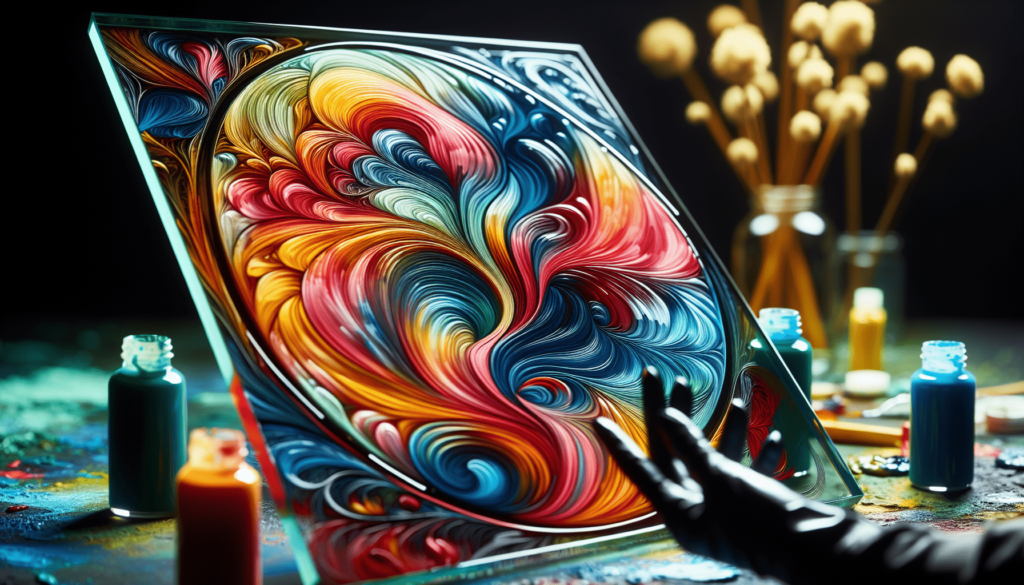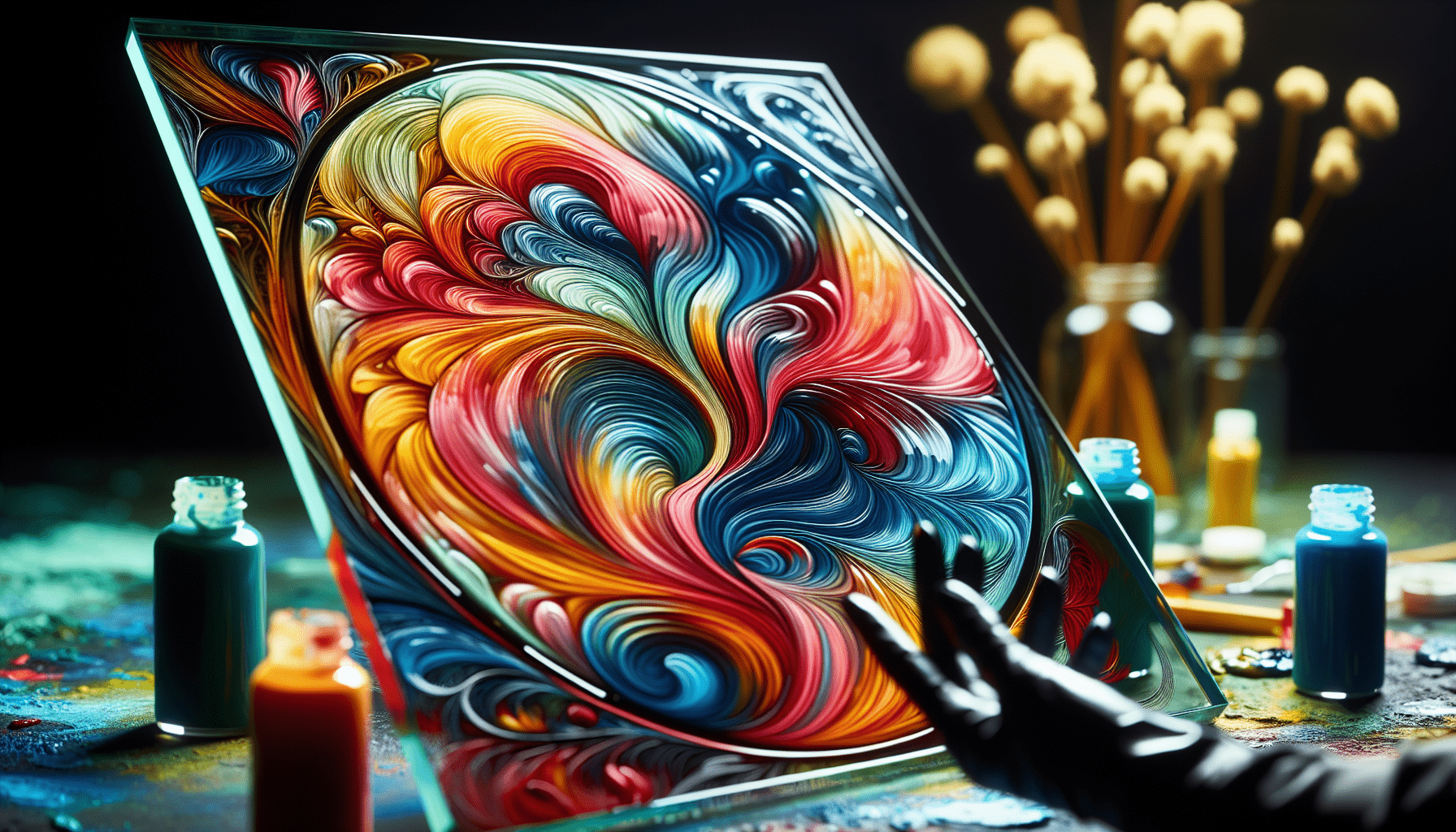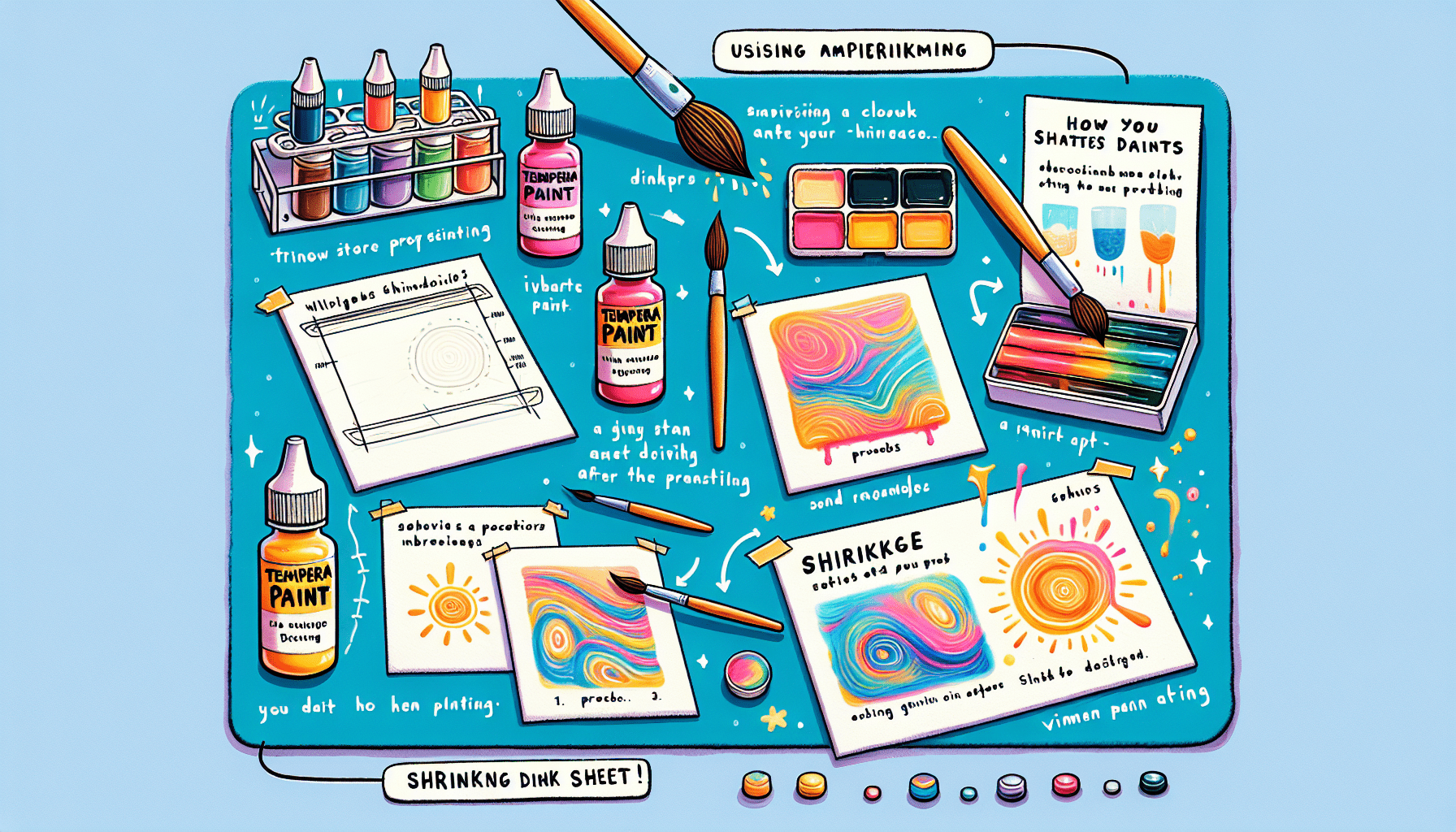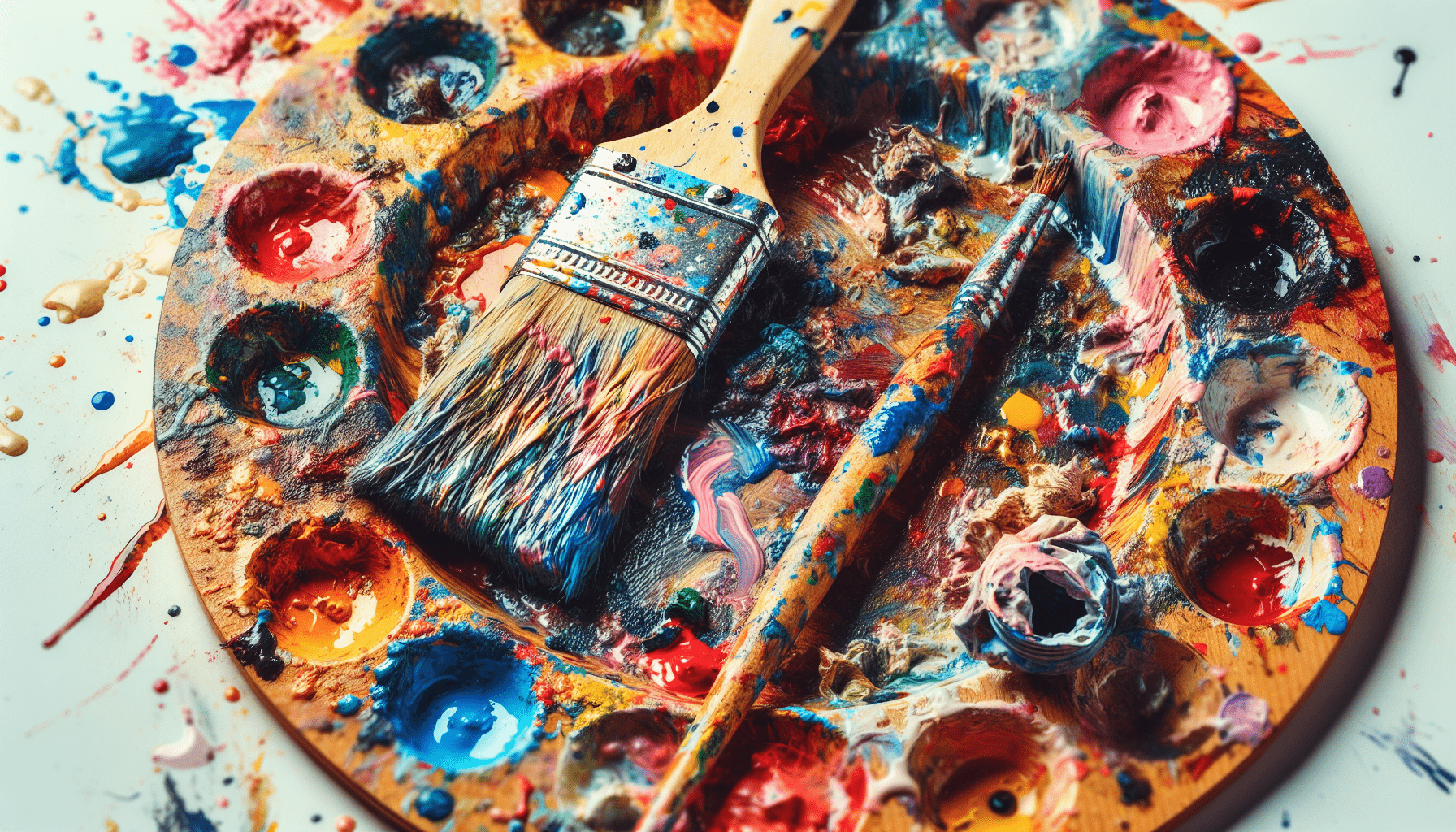Tempera paint, renowned for its vibrant colors and smooth texture, has long been favored by artists and educators alike. Yet, when it comes to painting on unconventional surfaces such as glass, the question arises: Can you use tempera paint on glass? In this article, we will explore the viability of using tempera paint on glass surfaces, examining its potential applications, techniques, and considerations to ensure a successful outcome. Whether you are an aspiring artist, a teacher looking for new mediums, or simply curious about the possibilities, read on to discover the fascinating world of tempera painting on glass.

What is Tempera Paint?
Tempera paint, also known as egg tempera, is a water-based paint that has been used for centuries. It is composed of pigments, water, and a binder, typically egg yolk. The egg yolk acts as a binding agent, helping the paint adhere to a variety of surfaces, including glass.
Composition of Tempera Paint
Tempera paint is made by mixing powdered pigments with water and a binder, such as egg yolk. The pigments give the paint its color, while the binder allows the paint to adhere to different surfaces. The egg yolk is often used as the binder due to its unique properties, including its ability to dry quickly and create a durable film.
Use of Tempera Paint
Tempera paint is commonly used in various art applications, including painting, drawing, and even printmaking. It is often chosen for its vibrant colors, ease of use, and affordability. It dries quickly, allowing artists to build up layers and achieve desired effects. It can be applied to a wide range of surfaces, including paper, wood, and glass.
Common Surfaces for Tempera Paint
While tempera paint can be used on a variety of surfaces, glass is one of the less common choices. Glass presents some unique challenges due to its smooth, non-absorbent surface. However, with proper surface preparation and painting techniques, it is possible to achieve beautiful results with tempera paint on glass.
Properties of Glass
Glass is an amorphous solid that is primarily composed of silicon dioxide. It is known for its transparency and smoothness. Glass has remarkable surface tension, which affects how paint adheres to it. The smooth surface of glass poses a challenge for paint to adhere properly, requiring specific preparation and techniques to achieve satisfactory results.
Composition of Glass
Glass is primarily made from silicon dioxide, or silica, which is obtained from sand. It is heated to high temperatures and then cooled rapidly to form a solid, transparent material. Various additives can be introduced during the manufacturing process to change the properties of the glass, such as its color or strength.
Surface Tension
Glass has a high surface tension due to the strong bonds between its molecules. This surface tension creates a repellent effect, making it challenging for paint to adhere properly. When tempera paint is applied directly to glass, it may bead up or slide off, resulting in poor adhesion and an uneven finish.
Smoothness
The smooth surface of glass poses a challenge for paint to adhere effectively. Unlike porous surfaces like paper or wood, glass does not provide any texture or absorbency for the paint to grip onto. Without proper surface treatment, tempera paint is prone to peeling or flaking off the smooth glass surface.

Applying Tempera Paint on Glass
To successfully apply tempera paint on glass, several steps should be followed:
Preparation
Clean the glass surface thoroughly to remove any dirt, dust, or oils that could affect adhesion. Use a mild detergent or glass cleaner and a lint-free cloth. Allow the glass to dry completely before proceeding.
Surface Treatment
To enhance paint adhesion, prime the glass surface with a dedicated glass primer or by applying a thin layer of white acrylic paint. This provides a slightly porous surface for the tempera paint to grip onto, helping it adhere more effectively.
Paint Application Techniques
When applying tempera paint on glass, it is recommended to use thin layers. The paint can be applied with brushes, sponges, or even fingers. Experiment with different techniques to achieve desired effects, such as blending colors or creating texture.
Drying Time
Allow each layer of tempera paint to dry completely before applying the next. The drying time will vary depending on the thickness of the paint and environmental conditions. It is important to be patient and ensure the paint is fully dry before proceeding.
Factors Affecting Adhesion
Several factors can affect the adhesion of tempera paint on glass:
Surface Cleanliness
The glass surface should be thoroughly cleaned before applying the paint. Any dirt, dust, or oils can create a barrier between the paint and the glass, inhibiting proper adhesion.
Surface Texture
The smoothness of glass makes it difficult for paint to adhere. Utilizing surface treatment techniques, such as priming or using a dedicated glass primer, can provide a slightly textured surface for the paint to grip onto.
Temperature
Temperature affects the drying time of tempera paint. Extreme heat or cold can impact the paint’s ability to dry properly and adhere to the glass surface. Avoid painting in very hot or cold conditions.
Humidity
Humidity levels can also affect the drying time and adhesion of tempera paint. High humidity can prolong drying time, while low humidity can cause the paint to dry too quickly, potentially impacting adhesion. Choose a suitable environment for painting on glass.
Pros of Using Tempera Paint on Glass
Using tempera paint on glass offers several benefits:
Vibrant Colors
Tempera paint is known for its vibrant and opaque colors. When applied to glass, these colors can create stunning and eye-catching designs.
Ease of Use
Tempera paint is easy to work with, especially for beginners. It has a smooth consistency, allowing for smooth brushstrokes or easy blending. It can be thinned with water or mixed with other colors to create different effects.
Versatility
Tempera paint can be used on various surfaces, including glass. This versatility allows artists to explore different techniques and experiment with different textures and effects.
Affordability
Compared to some other paint options, tempera paint is relatively affordable. This makes it accessible to a wide range of artists, including hobbyists and those on a budget.
Cons of Using Tempera Paint on Glass
While tempera paint can be used on glass, it does have some limitations:
Durability
Tempera paint is not as durable as some other paint options when applied to glass. The paint may chip or scratch over time, especially if the glass surface is subjected to regular use or cleaning.
Limited Transparency
Tempera paint is not inherently transparent. When applied to glass, it can create an opaque or semi-opaque appearance, depending on the thickness of the paint layers. This may limit certain artistic styles or desired visual effects.
Not Suitable for Dishwasher or Soaking
Glassware or objects painted with tempera paint should not be exposed to extreme water conditions, such as dishwashing or soaking. Water can cause the paint to become soft or peel off, damaging the design.
Tips for Better Results
To achieve better results when using tempera paint on glass, consider the following tips:
Surface Preparation
Thoroughly clean the glass surface before painting and apply a suitable primer or base coat to enhance paint adhesion.
Thin Layers
Apply thin layers of tempera paint to ensure proper adhesion and prevent excessive build-up. Allow each layer to dry completely before applying the next.
Sealing the Design
After the paint has thoroughly dried, consider sealing the design with a clear coat or varnish. This can help protect the paint and increase its durability on glass surfaces.
Proper Curing
Allow the painted glass object to cure for several days before using or handling it. This will give the paint sufficient time to fully dry and cure, ensuring better adhesion and durability.
Alternative Paint Options for Glass
If tempera paint does not meet your needs or preferences for painting on glass, consider these alternative paint options:
Acrylic Paint
Acrylic paint is a versatile option for painting on glass. It adheres well to glass surfaces, dries quickly, and can achieve various transparency levels. Acrylic paint comes in a wide range of colors and can be easily mixed or diluted for different effects.
Glass Paint
Specifically designed for painting on glass, glass paint offers excellent adhesion and durability. It typically comes in transparent or semi-transparent formulations and can be cured to ensure long-lasting results.
Enamel Paint
Enamel paint is known for its durability and ability to adhere to different surfaces, including glass. It creates a smooth, glossy finish and can withstand frequent cleaning. Enamel paint is available in a range of colors and finishes.
Examples of Glass Painting with Tempera Paint
Tempera paint can be used to create various glass art projects:
Decorative Glass Art
Use tempera paint to create intricate and colorful designs on glass panels or windows. This can add a decorative touch to any space, allowing light to pass through the painted glass, creating stunning visual effects.
Craft Projects
Tempera paint can be used in various craft projects involving glass, such as painting glass jars, vases, or ornaments. The vibrant colors and ease of use make it a popular choice for DIY enthusiasts and hobbyists.
Window Designs
Painting on glass windows can be an innovative way to add privacy or create unique designs. Tempera paint can be used to create stunning window designs that are visible both inside and outside.
Votive Candle Holders
Decorate glass votive candle holders with tempera paint to create personalized and visually appealing designs. The painted glass can enhance the ambiance when the candle is lit.
Conclusion
Using tempera paint on glass can be a rewarding artistic endeavor. While glass presents challenges due to its smooth surface, with proper surface preparation, paint application techniques, and adherence to drying times, successful results can be achieved. Tempera paint offers vibrant colors, ease of use, versatility, and affordability. However, it does have its limitations in terms of durability, transparency, and resistance to water. By following general guidelines, experimenting with personal techniques, and expressing artistic creativity, tempera paint can be an exciting medium for glass painting projects.



